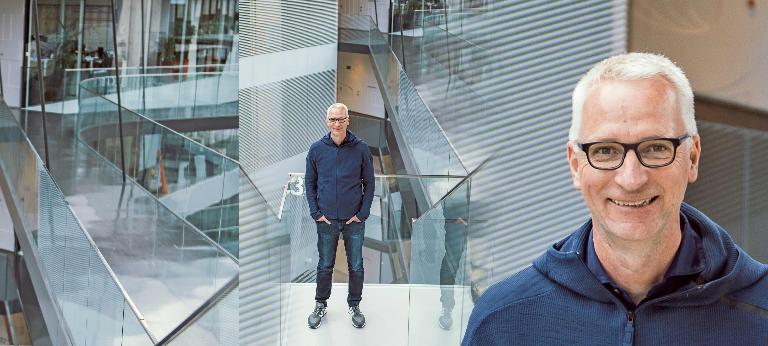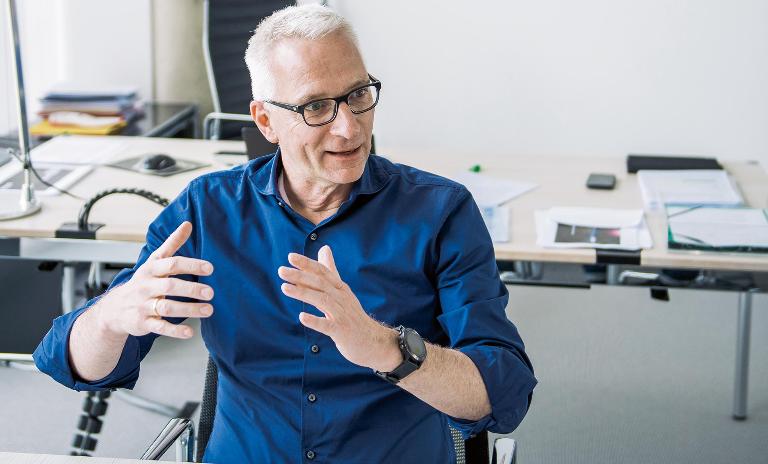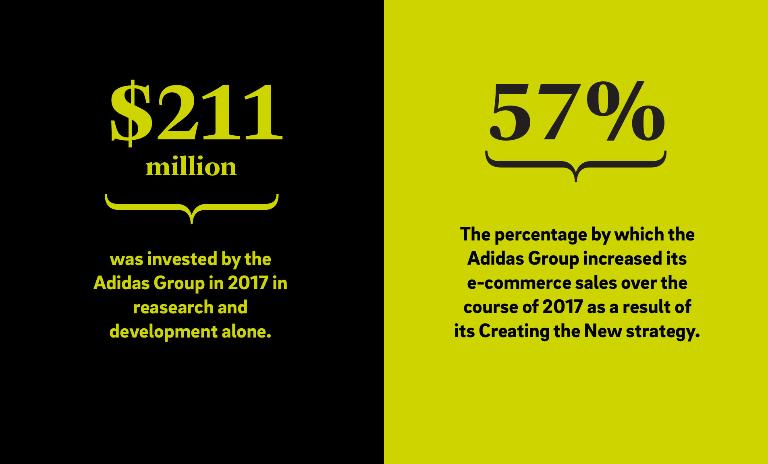The purpose principle
![{[downloads[language].preview]}](https://www.rolandberger.com/publications/publication_image/think_act_magazine_purpose_the_purpose_principle_cover_1_download_preview.png)
What does purpose mean to you and your business? Our Think:Act magazine on purpose addresses changing values in the business world.


by Titus Chalk
photos by Dirk Bruniecki
Read more about the topic
"The purpose principle – missions give businesses strength"
World-famous German sports brand Adidas has a bold plan for tackling the challenges of digitization head on. Head of Global Sales Roland Auschel explains why he thinks the company's three-point strategy can edge out the competition.
Roland Auschel covers a lot of ground, both literally and metaphorically: He sets the pace with his long stride and as he walks, he talks with unwavering enthusiasm about Adidas. He's been with the company for almost 30 years and in that time he's seen it grow beyond all recognition.
Today, you can hear children shrieking with delight at the on-site kindergarten. But otherwise, the former barracks is leafy and peaceful, dotted with trees, sports pitches and the ever-growing number of buildings that house one of Germany's youngest major companies – the average employee age here is only 37. Inside the gleaming Laces building where walkways criss-cross beneath a glass canopy, you can see exactly what that means: scores of hip, young netizens clutching laptops and sporting company track pants, beanies or sweatshirts. In this environment, Auschel seems avuncular and one of the team, energized by the youthful talent he and his fellow executive board members have attracted to Herzogenaurach, the village where founder Adi Dassler grew up and trained as a cobbler.
Auschel, the head of global sales, has the look of someone who spends plenty of time in the company gym: He's trim, silver-haired and keeps this interview with Think:Act running, rarely slowing down as he conducts a bounding walk through the complex and answers some questions on how the company is getting on track for the challenging years ahead.

You are halfway into Adidas' new strategic plan called Creating the New, which was launched in 2015. It highlights three key areas: speed, cities and open source. Can you explain what makes these things so important to Adidas?
We developed the strategy in 2014, just after we had to declare that our previous strategy cycle, Route 2015 [the strategy launched in 2010 that aimed to grow the business by 40-50% to €17 billion by 2015], wouldn't yield the expected results. So we had to ask ourselves what would make a difference. We thought: "Where does the consumer live today?" We believe in key cities: New York, Los Angeles, London, Paris, Shanghai and Tokyo. We asked: "How do we want to create products?" That led us to the speed choice. And finally: "How do we want to build the brand going forward?" And that took us to the question of open source. If we implement these things correctly, they should lead to brand desire – and it's brand desire that will make us win in this industry.
"If we implement these things correctly, they should lead to brand desire – and it's brand desire that will make us win in this industry."
What has all of that meant in terms of your digitization program?
It's had a huge impact on it. Because if you ask yourself what brings these factors together, you quickly come to digitization. How does the lifestyle of our consumer work? It's all digital. It's Facebook, Snapchat, Instagram and so on. And that's where our entire activation effort is shifting.
Then you look at the notion of open source and the opportunities digitization provides there. That's probably the most radical decision we took in 2014. We were a 70-year-old company that was very proud of its history. We wouldn't have had the guts to pursue an open-source strategy if we hadn't just had a moment of failure. It gave us an opportunity to take a risk in allowing others to influence our creative process and contribute to our brand's DNA.
How much is the company investing in digitization? Are there particular areas that Adidas is looking to focus on?
We approached this whole notion by saying whatever can get digitized, will be digitized. We had said e-commerce would be worth $2 billion under the previous plan, but when we came back to the market, we doubled that to $4 billion by 2020. We are also hiring hundreds of engineers and software engineers to help us figure this out. We're turning ourselves into much more of a software company than we used to be.

You're making a digital push in production with something called the Speedfactory, as well. Could you explain what the Speedfactory is exactly?
We can produce certain products in a factory that is fully automated and requires very few people to be there. We launched the first one in Ansbach and have just opened the second one in Atlanta. One machine knits the shoe's upper. The second machine makes the Boost foam midsole [the new innovative cushioning material]. Then a third machine attaches the outsole and a fourth adds stability through bands applied to the side. If you have robots that can pass the shoe from one machine to the next, you can basically produce this shoe without any human labor involved. Although we still need someone to put the laces in!
Adidas has also created something called the Future Team. What's their mission statement?
The Future Team is everyone who works on innovation in the company – think material innovations, our Boost foam soles when they initially launched. It's a combination of engineers, designers, product experts and people who we have fully dedicated to making the future happen. They work two, three, sometimes five years out in terms of technologies, materials or approaches to design. They also have a higher degree of independence in the company, so they can really go far out – and bring ideas back to us. We think of them as our beacons, our pilots, showing us the way to the future.
Looking to the near future – and the 2018 World Cup: How big of a marketing opportunity does the tournament represent to Adidas every four years?
It's very significant. We've produced the official ball since 1970 and we're very proud of that relationship. It ties us to the world's biggest participation sport. The World Cup is a sensational brand activation platform: You can show off your latest innovations, your latest designs to the world, on the field of play, on athletes who are very aspirational for people around the world – be it Lionel Messi or others. We can't wait for the World Cup to start.
Given Adidas' success in the past few years, what ambitions do you still have for the company?
We want to be the best sports company in the world. That's our ambition, what binds us together. We all believe that sport has this power to change lives. It's not about being the biggest or even the most profitable. It's about being the best. That's what inspires us, and I would love to contribute to that. That's why I've just signed up to the company for five years – a big decision at my age.
So it's not just about selling sneakers, it's about changing lives?
We see the positive impact of sport on not just our lives, but all lives. Look at the obesity problem in the world, at other cultural and environmental challenges. I was at a big sales meeting in Miami last week where we had an hour-long presentation from Parley for the Oceans. They clean up plastics from the sea, which we then turn into a knitted upper – from a threat into a thread. If we can help make the world a better place, that's the best future for our company.

![{[downloads[language].preview]}](https://www.rolandberger.com/publications/publication_image/think_act_magazine_purpose_the_purpose_principle_cover_1_download_preview.png)
What does purpose mean to you and your business? Our Think:Act magazine on purpose addresses changing values in the business world.
Curious about the contents of our newest Think:Act magazine? Receive your very own copy by signing up now! Subscribe here to receive our Think:Act magazine and the latest news from Roland Berger.
